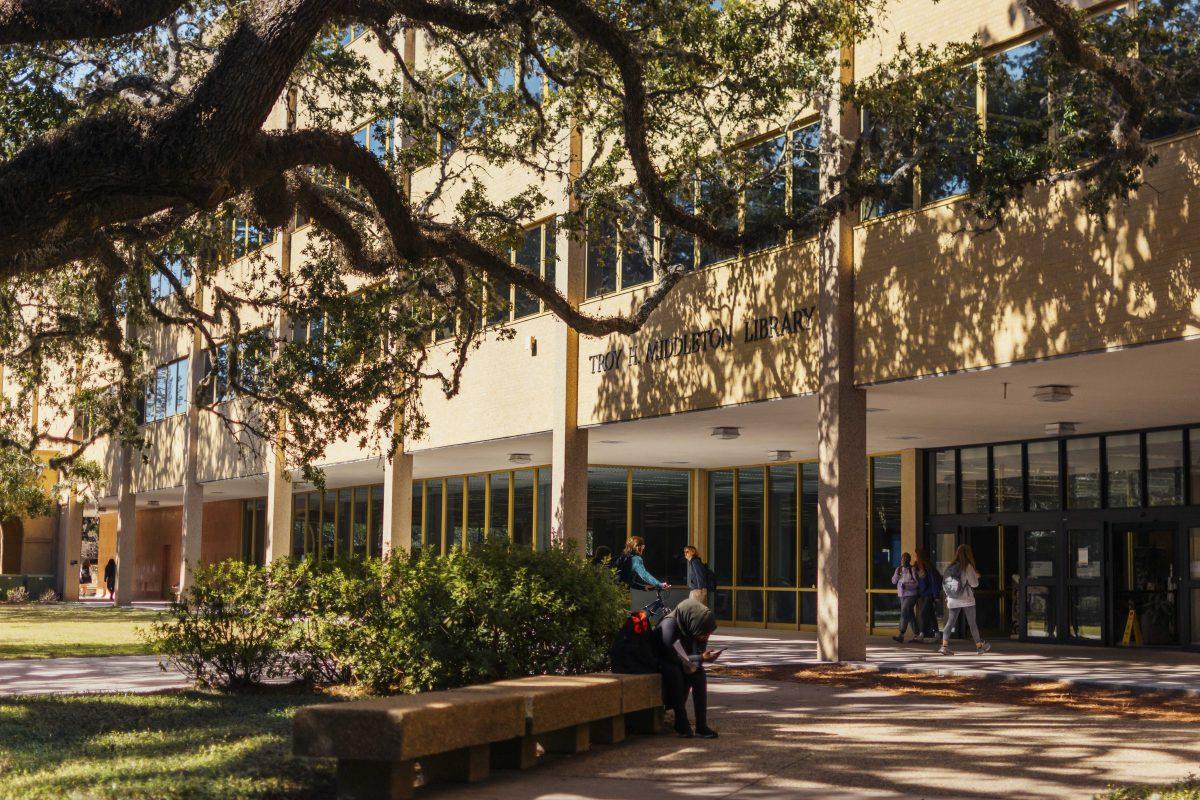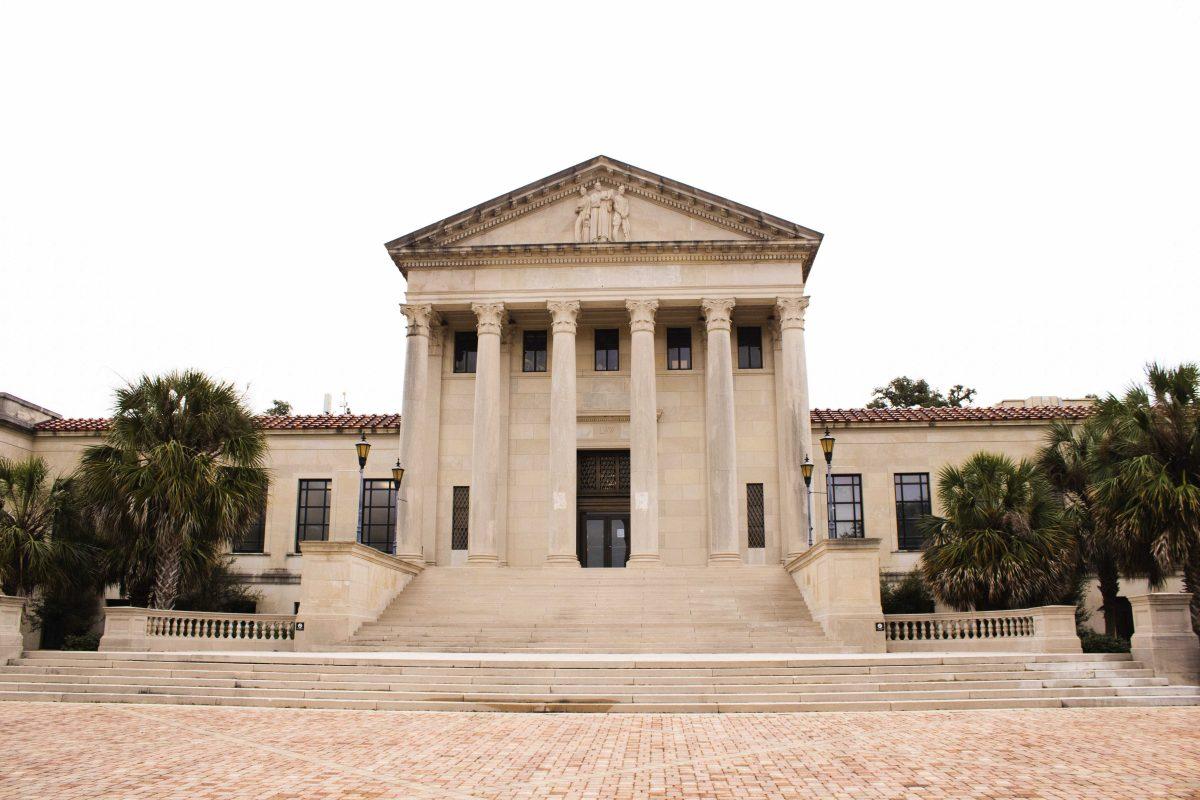Several buildings on LSU’s campus have asbestos-contaminated areas, according to Facility Services’ deferred maintenance list.
The list details the University’s maintenance projects, which totaled $616 million as of Sept. 13.
Woodin Hall needs $125,000 to replace asbestos flooring and hallways. The Engineer Quad Steam Tunnel needs 50 feet of asbestos abatement, costing $200,000. Troy H. Middleton Library needs $400,000 to replace asbestos flooring on the first floor by the stacks. In total, the University has over $725,000 worth of asbestos removal scheduled, although none of these repairs take immediate priority on the maintenance list.
The concern with asbestos is the fibers becoming airborne and people unknowingly breathing them in, said mesothelioma.com health writer Colin Ruggiero.
“Asbestos fibers are invisible, so it’s hard to know if you’re being exposed,” Ruggiero said.
Asbestos is a naturally-occurring mineral that has been commercially used for insulation, ceiling and floor tiles, fireproofing and pipes, among other things, since the late 1800s. Because of its durability and fire-resistance, asbestos became a popular, inexpensive building material.
When asbestos-containing material is disturbed in some way, asbestos fibers may be released into the air, according to the U.S. Environmental Protection Agency. Fibers can irritate lung tissue, causing scarring and damage. Long-term exposure to asbestos can result in respiratory, cardiac and abdominal illnesses, including lung cancer and malignant mesothelioma.
The U.S. Consumer Product Safety Commission banned new uses of asbestos in 1989, but by that time, many buildings were built with asbestos on the University’s campus.
“People didn’t know,” Ruggiero said. “They thought it [asbestos] was this miracle building material.”
Michael Hooks, director of the LSU Office of Environmental Health and Safety, also an accredited trainer, inspector and supervisor of asbestos abatement projects through the Louisiana Department of Environmental Quality, said it was likely that many University buildings contain what was once considered the “miracle fiber.”
“We have three hundred plus buildings on campus,” Hooks said. “Any building built before 1980 probably has some type of asbestos in it because it was a commonly used building component. In just about every type of building material you could think of, flooring tile, ceiling tile, plaster, pipe insulation, countertops, roofing, just anything.”
Hooks stressed asbestos is not inherently dangerous until the fibers are disturbed. Material that’s harder to damage, like flooring, wouldn’t be an issue until cut into, sanded, broken or disturbed in any way.
“If I had a roof leak and the material got wet, a ceiling tile could fall down,” Hooks said. “If that ceiling tile had asbestos in it, that could be a problem. If I had a floor tile with asbestos in it, and I had to pick it up, that could be an issue. So it really depends on the material, but typically it’s not easy to dislodge the asbestos.”
Because problems with asbestos surface normally during building updates, the University must complete an asbestos check before any work on campus can be done, Hooks said. Any asbestos present in the building must be removed before renovations begin, usually completed by third-party contractors.
According to Hooks, the contractors build a containment unit around the affected area, put the area under negative pressure so the asbestos contamination doesn’t spread, filter the air via a machine and then have workers enter the space.
The added time and expense of asbestos removal is one factor that impedes University building renovations, especially in the older and more decrepit spaces, Hooks said.
“We would love to see all the buildings be in the best condition they can be in. When we have to renovate or update buildings, the asbestos just comes along with that project,” Hooks said. “Unfortunately it makes it more expensive, so it makes it more of a budget issue.”
As long as the asbestos-containing flooring in Middleton and Woodin remain undisturbed, there are no immediate issues present. The Engineer Quad Steam Tunnel may be a more pressing concern, since it needs “500 ft of asbestos abatement,” according to the deferred maintenance list. Asbestos abatement involves the containment or removal of asbestos fibers, preventing them from becoming airborne and contaminating the surrounding areas.
While asbestos fibers do present an immediate concern, Ruggiero said it would be best for the University to wait until the summer to begin the abatement process. Students, faculty and staff could be at risk if they are on campus during the abatement.
“When schools end up doing it during the school year and the team isn’t properly trained, the team could end up botching the project,” Ruggiero said. “I would do it when as few people are on campus as possible.”
Although Facility Services is working to remove asbestos from campus, some students aren’t concerned about the issue at all.
Civil engineering sophomore Jared Kitto said he didn’t know what asbestos was and wasn’t aware it was on the University’s campus.
Experimental music and digital media Ph.D student Tate Carson said he wasn’t very concerned about asbestos on campus.
“I am not aware of it, but if you think about it, it’s probably all over the place,” Carson said. “I guess I could be worried about it. They should probably be doing something about it.”
Director of Capital Project Management and Development Paul Favaloro said prioritizing maintenance needs is a collaborative process. Team members plan the list years in advance and adjust it when unforeseen needs arise.
Associate Vice President of Planning, Design and Construction Roger Husser said immediate needs such as air conditioning repairs always take priority over projects already listed.
“A lot of times things happen and that’s what we have to go to and repair,” Husser said. “When it comes to things like air conditioning repairs, the priority is the one that actually quit. Then it becomes an emergency.”
Favaloro cited cost as another reason for the asbestos projects’ low placement on the maintenance list. Removing asbestos properly can be an expensive, time-consuming project.
Ruggiero said any amount of exposure is dangerous, but asbestos abatement workers are at the highest risk.
“I wouldn’t say it’s extremely urgent, but it would take priority over window replacements,” Ruggiero said. “I would try to do it as soon as possible. This summer would be great.”
Over $725,000 in asbestos replacement, abatement needed in Woodin, Middleton, Engineer Quad Steam Tunnel
November 25, 2019
Middleton Library sits in the Quad on Friday, November 15, 2019.







